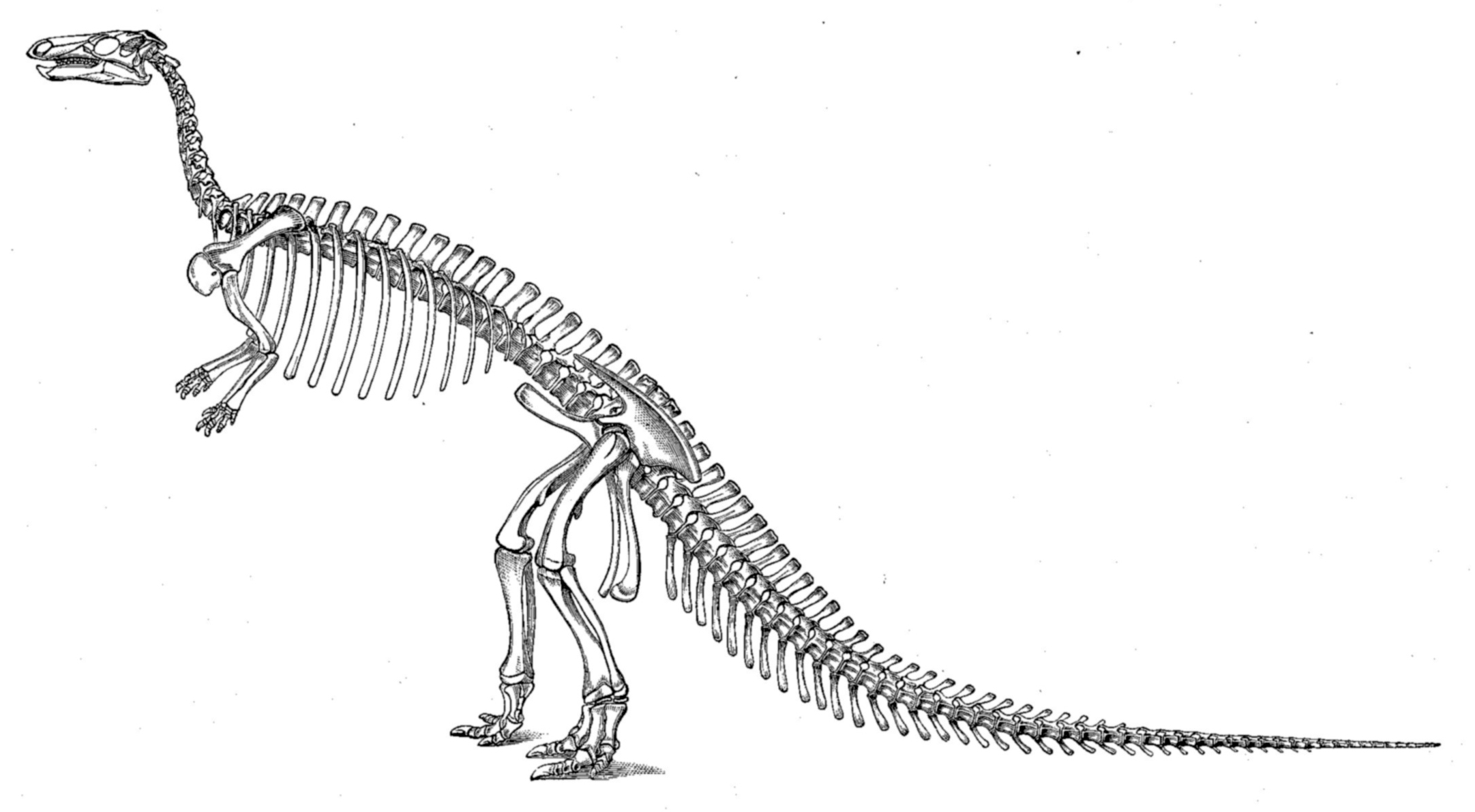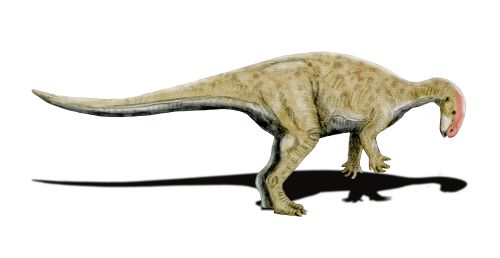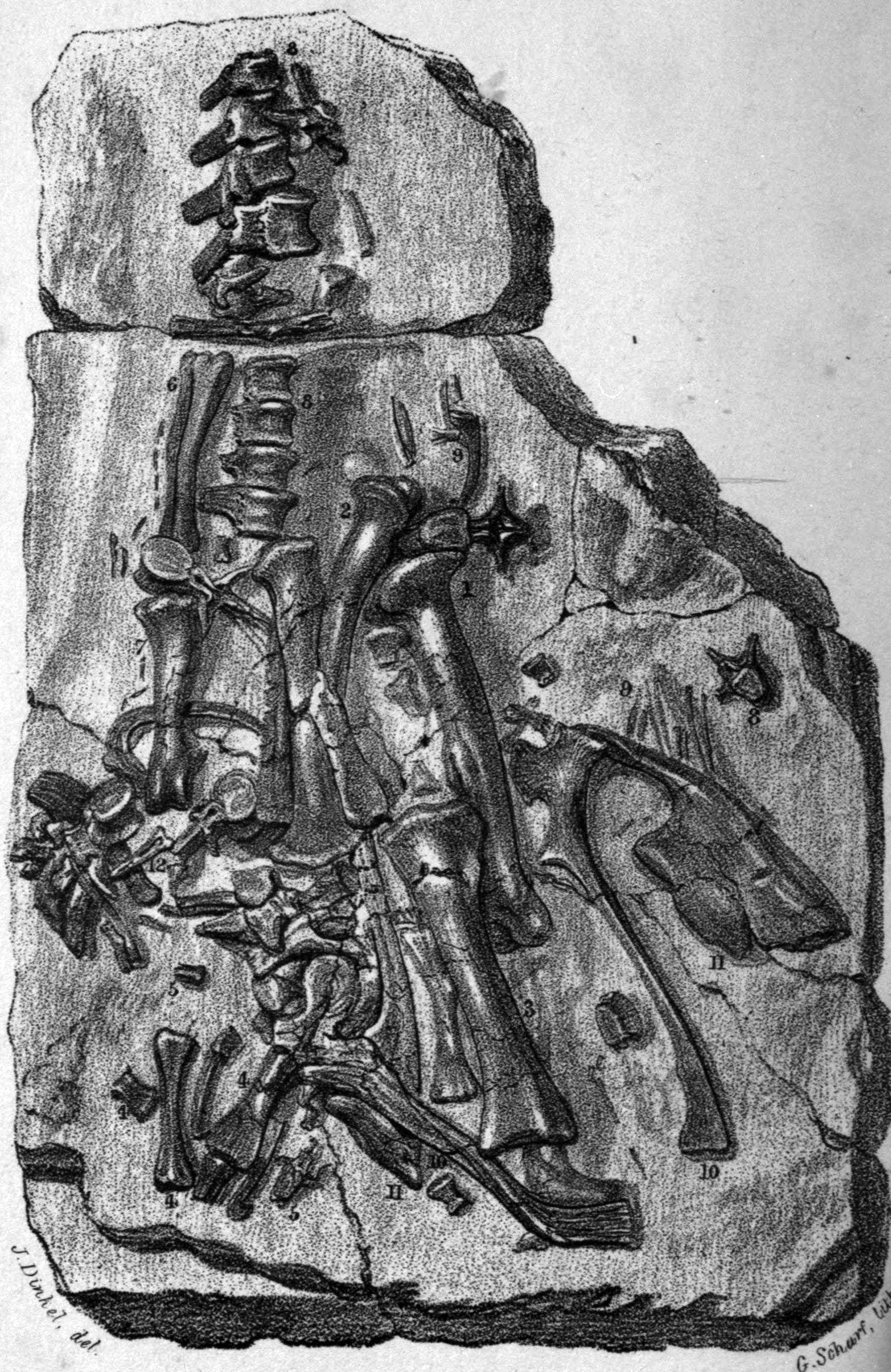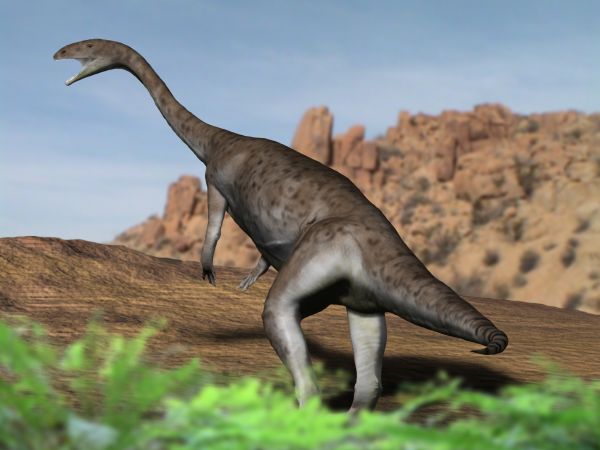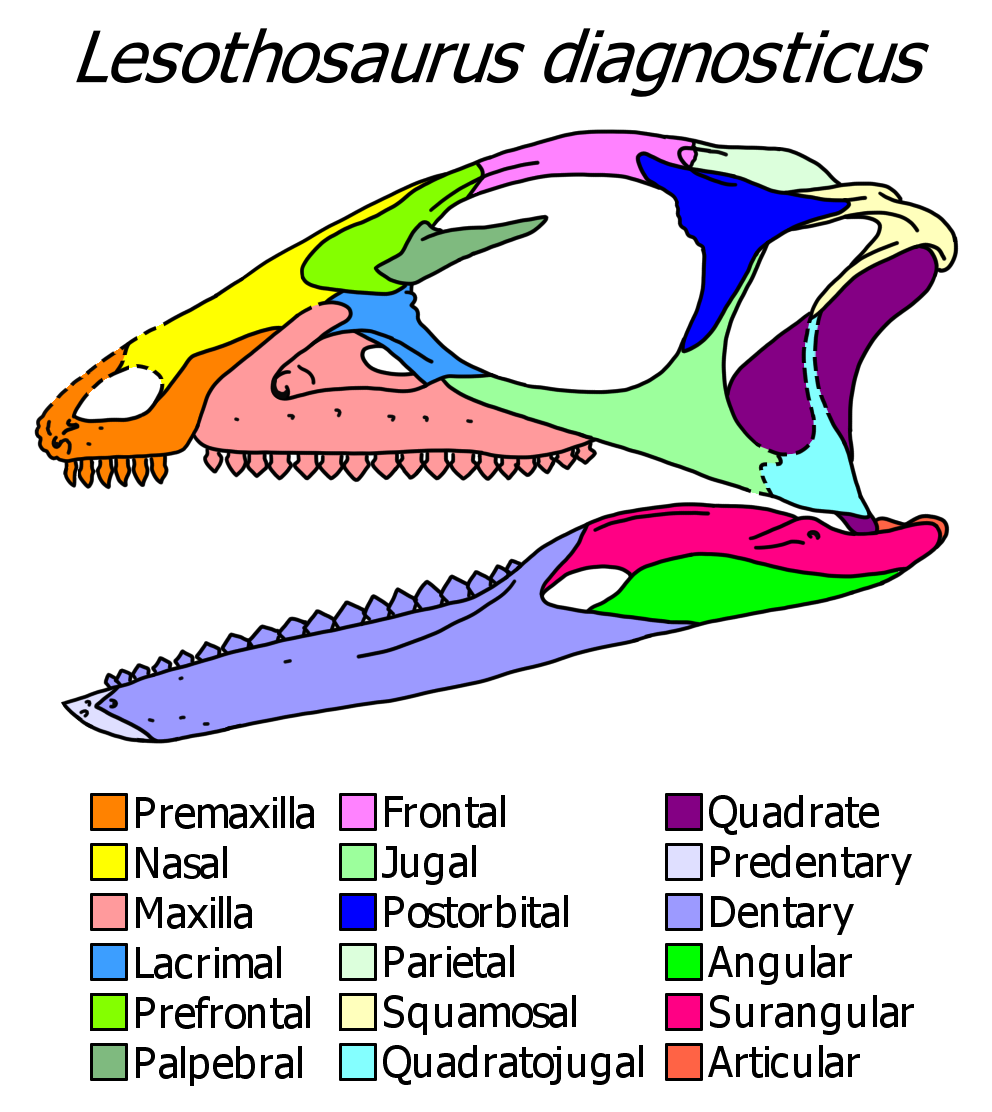|
Camptosaurus
''Camptosaurus'' ( ) is a genus of plant-eating, beaked ornithischian dinosaurs of the Late Jurassic Period (geology), period of western North America and possibly also Europe. The name means 'flexible lizard' (Ancient Greek, Greek (') meaning 'bent' and (') meaning 'lizard'). History of discovery On September 4, 1879 William Harlow Reed in Albany County, Wyoming found the remains of a small Euornithopoda, euornithopod. That same year Professor Othniel Charles Marsh described and named the find as ''Camptonotus'', or "flexible back", from Greek κάμπτω, "to bend" and νῶτον, "back", in reference to the presumed flexibility of the sacral vertebrae. The holotype was YPM 1877, a partial skeleton. The genus was renamed ''Camptosaurus'' by him in 1885 because the original name was already in use for a cricket (insect), cricket. In 1879, Marsh named ''C. dispar'' (type species of the genus) for material he received from his collectors at ''Quarry 13'' near Como Bluff, Wyom ... [...More Info...] [...Related Items...] OR: [Wikipedia] [Google] [Baidu] |
Uteodon
''Uteodon'' (meaning "Ute people, Ute tooth") is a genus of herbivorous iguanodontian dinosaur. It is a basal (phylogenetics), basal iguanodontian which lived during the late Jurassic period (geology), period (Tithonian age) in what is now Uintah County, Utah. It is known from the middle of the Brushy Basin Member, Morrison Formation. The genus was named by Andrew T. McDonald in 2011 in paleontology, 2011 and the type species is ''U. aphanoecetes''. History The holotype specimen, CM 11337 (a virtually complete skeleton minus the skull and tail), was assigned to ''Camptosaurus, Camptosaurus medius'' (Othniel Charles Marsh, Marsh, 1894) by Charles W. Gilmore in 1925. When ''C. medius'' was synonymised with ''Camptosaurus dispar'' in 1980,Gregory S. Paul, G.S. Paul (2010) "''The Princeton Field Guide to Dinosaurs''". (Page 284). the holotype was seen to probably represent a new, then unnamed, species of ''Camptosaurus''. The species ''Camptosaurus aphanoecetes'' was first described in ... [...More Info...] [...Related Items...] OR: [Wikipedia] [Google] [Baidu] |
Cumnoria
''Cumnoria'' is a genus of herbivorous iguanodontian dinosaur. It was a basal iguanodontian that lived during the Late Jurassic period (Kimmeridgian age) in what is now Oxfordshire, United Kingdom. Description The holotype of ''Cumnoria'' is a rather small bipedal animal with a slender build, about 3.5 metres (11.4 feet) long. The specimen is a juvenile due to the general lack of fusion among all of its vertebrae and ribs. It can be distinguished from all other iguanodontians by the presence of a prominent ridge on the sternal process of the coracoid and an oval muscle scar on the front of the deltopectoral crest of the humerus. Uniquely among non-hadrosauriforms, the ventral and dorsal margins of the scapula only moderately diverge from each other, and there is no defined cingulum on the dentary teeth. History of discovery ''Cumnoria'' is known from the holotype OXFUM J.3303, a partial skull and postcranium, recovered from the lower Kimmeridge Clay Formation, in the Chaw ... [...More Info...] [...Related Items...] OR: [Wikipedia] [Google] [Baidu] |
Iguanodon
''Iguanodon'' ( ; meaning 'iguana-tooth'), named in 1825, is a genus of iguanodontian dinosaur. While many species found worldwide have been classified in the genus ''Iguanodon'', dating from the Late Jurassic to Early Cretaceous, Taxonomy (biology), taxonomic revision in the early 21st century has defined ''Iguanodon'' to be based on one well-substantiated species: ''I. bernissartensis'', which lived during the Barremian to early Aptian ages of the Early Cretaceous in Belgium, Germany, England, and Spain, between about 126 and 122 million years ago. ''Iguanodon'' was a large, bulky herbivory, herbivore, measuring up to in length and in body mass. Distinctive features include large thumb spikes, which were possibly used for defense against predation, predators, combined with long prehensile fifth fingers able to forage for food. The genus was named in 1825 by English geologist Gideon Mantell, based on fossil specimens found in England and was given the species name ''I. ... [...More Info...] [...Related Items...] OR: [Wikipedia] [Google] [Baidu] |
Como Bluff
Como Bluff is a long ridge extending east–west, located between the towns of Rock River and Medicine Bow, Wyoming. The ridge is an anticline, formed as a result of compressional geological folding. Three geological formations, the Sundance, the Morrison, and the Cloverly Formations, containing fossil remains from the Late Jurassic of the Mesozoic Era, are exposed. Nineteenth-century paleontologists discovered many well-preserved specimens of dinosaurs, as well as mammals, turtles, crocodilians, and fish from the Morrison Formation. Because of this, Como Bluff is considered to be one of the major sites for the early discovery of dinosaur remains. Among the species discovered is the only known specimen of ''Coelurus''. Significant discoveries were made in 22 different areas scattered along the entire length of the ridge. It is included on the National Register of Historic Places as well as the National Natural Landmark list. History of discovery The discovery of dinosau ... [...More Info...] [...Related Items...] OR: [Wikipedia] [Google] [Baidu] |
Allosaurus
''Allosaurus'' ( ) is an extinct genus of theropod dinosaur that lived 155 to 145 million years ago during the Late Jurassic period ( Kimmeridgian to late Tithonian ages). The first fossil remains that could definitively be ascribed to this genus were described in 1877 by Othniel C. Marsh. The name "''Allosaurus''" means "different lizard", alluding to its lightweight , which Marsh believed were unique. The genus has a very complicated taxonomy and includes at least three valid species, the best known of which is ''A. fragilis''. The bulk of ''Allosaurus'' remains come from North America's Morrison Formation, with material also known from the Alcobaça Formation and Lourinhã Formation in Portugal. It was known for over half of the 20th century as '' Antrodemus'', but a study of the abundant remains from the Cleveland-Lloyd Dinosaur Quarry returned the name "''Allosaurus''" to prominence. As one of the first well-known theropod dinosaurs, it has long attracted attention ... [...More Info...] [...Related Items...] OR: [Wikipedia] [Google] [Baidu] |
1885 In Paleontology
Archosaurs Newly named basal archosauromorphs Newly named non-avian dinosaurs Synapsids {, class="wikitable" !Name !Authors !Age !Location !Notes !Images , - , '' Cyonasua'' , Ameghino , 5 Million years ago , * * {{Flag, Venezuela , It was one of the first placental mammals that came from North America. , References ... [...More Info...] [...Related Items...] OR: [Wikipedia] [Google] [Baidu] |
Othniel Charles Marsh
Othniel Charles Marsh (October 29, 1831 – March 18, 1899) was an American professor of paleontology. A prolific fossil collector, Marsh was one of the preeminent paleontologists of the nineteenth century. Among his legacies are the discovery or description of dozens of new species—including the stegosaurus and triceratops—and theories on the origins of birds. He spent his academic career at Yale College and was president of the National Academy of Sciences. Born into a modest family, Marsh was able to afford higher education thanks to the generosity of his wealthy uncle George Peabody. After graduating from Yale College in 1860 he traveled the world, studying anatomy, mineralogy and geology. He obtained a teaching position at Yale upon his return. From the 1870s to 1890s, he competed with rival paleontologist Edward Drinker Cope in a period of frenzied Western American expeditions known as the Bone Wars. Marsh's greatest legacy is the collection of Mesozoic reptiles, Creta ... [...More Info...] [...Related Items...] OR: [Wikipedia] [Google] [Baidu] |
Ornithischian
Ornithischia () is an extinct clade of mainly herbivorous dinosaurs characterized by a pelvic structure superficially similar to that of birds. The name ''Ornithischia'', or "bird-hipped", reflects this similarity and is derived from the Greek stem ' (), meaning "bird", and ' (), meaning "hip". However, as theropod dinosaurs, birds are only distantly related to this group. Ornithischians with well known anatomical adaptations include the ceratopsians or "horn-faced" dinosaurs (e.g. ''Triceratops''), the pachycephalosaurs or "thick-headed" dinosaurs, the armored dinosaurs (Thyreophora) such as stegosaurs and ankylosaurs, and the ornithopods. There is strong evidence that certain groups of ornithischians lived in herds, often segregated by age group, with juveniles forming their own flocks separate from adults. Some were at least partially covered in filamentous (hair- or feather- like) pelts, and there is much debate over whether these filaments found in specimens of '' Tianyulong ... [...More Info...] [...Related Items...] OR: [Wikipedia] [Google] [Baidu] |
Morrison Formation
The Morrison Formation is a distinctive sequence of Upper Jurassic sedimentary rock found in the western United States which has been the most fertile source of dinosaur fossils in North America. It is composed of mudstone, sandstone, siltstone, and limestone and is light gray, greenish gray, or red. Most of the fossils occur in the green siltstone beds and lower sandstones, relics of the rivers and floodplains of the Jurassic period. It is centered in Wyoming and Colorado, with outcrops in Montana, North Dakota, South Dakota, Nebraska, Kansas, the panhandles of Oklahoma and Texas, New Mexico, Arizona, Utah, and Idaho. Equivalent rocks under different names are found in Canada. It covers an area of 1.5 million square kilometers (600,000 square miles), although only a tiny fraction is exposed and accessible to geologists and paleontologists. Over 75% is still buried under the prairie to the east, and much of its western paleogeographic extent was eroded during exhuma ... [...More Info...] [...Related Items...] OR: [Wikipedia] [Google] [Baidu] |
Euornithopoda
Ornithopoda () is a clade of ornithischian dinosaurs, called ornithopods (). They represent one of the most successful groups of herbivorous dinosaurs during the Cretaceous. The most primitive members of the group were bipedal and relatively small-sized, while advanced members of the subgroup Iguanodontia became quadrupedal and developed large body size. Their major evolutionary advantage was the progressive development of a chewing apparatus that became the most sophisticated ever developed by a non-avian dinosaur, rivaling that of modern mammals such as the domestic cow. They reached their apex of diversity and ecological dominance in the hadrosaurids (colloquially known as 'duck-bills'), before they were wiped out by the Cretaceous–Paleogene extinction event along with all other non- avian dinosaurs. Members are known worldwide. History of research In 1870, Thomas Henry Huxley listed Iguanodontidae (coined by Edward Drinker Cope a year earlier) as one of his three families ... [...More Info...] [...Related Items...] OR: [Wikipedia] [Google] [Baidu] |
Dinosaur
Dinosaurs are a diverse group of reptiles of the clade Dinosauria. They first appeared during the Triassic Geological period, period, between 243 and 233.23 million years ago (mya), although the exact origin and timing of the #Evolutionary history, evolution of dinosaurs is a subject of active research. They became the dominant terrestrial vertebrates after the Triassic–Jurassic extinction event 201.3 mya and their dominance continued throughout the Jurassic and Cretaceous periods. The fossil record shows that birds are feathered dinosaurs, Evolution of birds, having evolved from earlier Theropoda, theropods during the Late Jurassic epoch, and are the only dinosaur lineage known to have survived the Cretaceous–Paleogene extinction event approximately 66 mya. Dinosaurs can therefore be divided into avian dinosaurs—birds—and the extinct non-avian dinosaurs, which are all dinosaurs other than birds. Dinosaurs are varied from taxonomy (biology), taxonomic, ... [...More Info...] [...Related Items...] OR: [Wikipedia] [Google] [Baidu] |
Late Jurassic
The Late Jurassic is the third Epoch (geology), epoch of the Jurassic Period, and it spans the geologic time scale, geologic time from 161.5 ± 1.0 to 143.1 ± 0.8 million years ago (Ma), which is preserved in Upper Jurassic stratum, strata.Owen 1987. In European lithostratigraphy, the name "Malm" indicates rocks of Late Jurassic age. In the past, ''Malm'' was also used to indicate the unit of geological time, but this usage is now discouraged to make a clear distinction between lithostratigraphic and geochronologic/chronostratigraphic units. Subdivisions The Late Jurassic is divided into three ages, which correspond with the three (faunal) stages of Upper Jurassic rock: Paleogeography During the Late Jurassic Epoch, Pangaea broke up into two supercontinents, Laurasia to the north, and Gondwana to the south. The result of this break-up was the emergence of the Atlantic Ocean, which initially was relatively narrow. Life forms This epoch is well known for many famous types of d ... [...More Info...] [...Related Items...] OR: [Wikipedia] [Google] [Baidu] |
